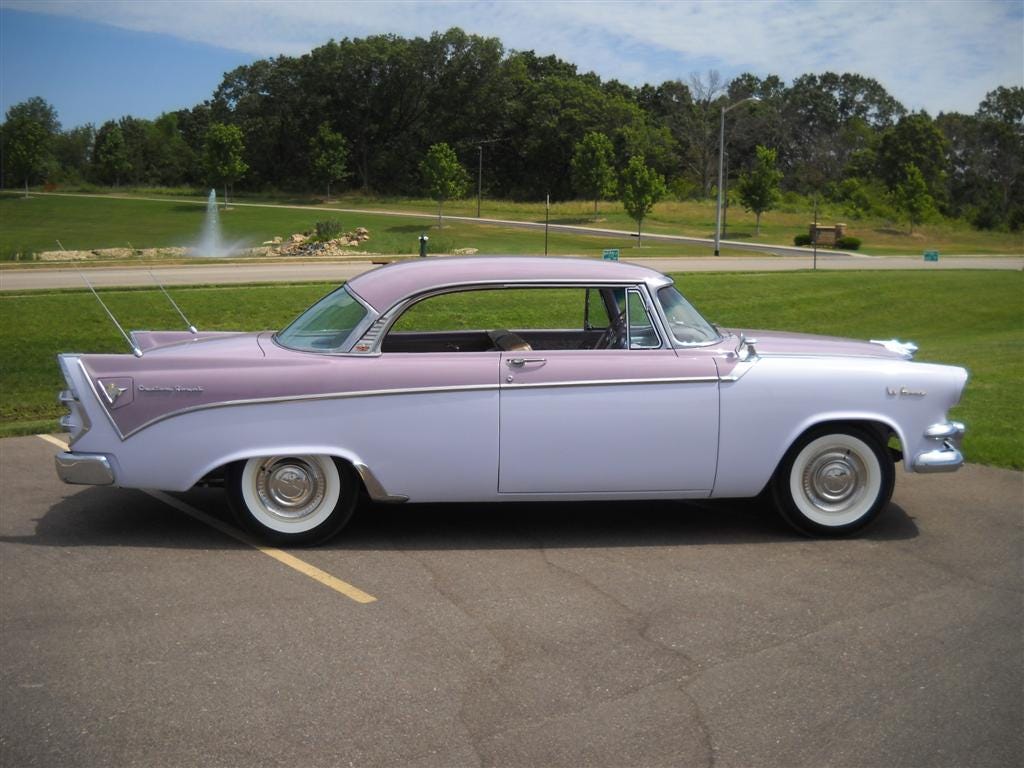
When Horace Elgin Dodge and John Francis Dodge founded the Dodge Brothers Company in 1900, they weren’t thinking about fast cars. In fact, Horace was busy patenting a dirt-resistant bicycle bearing in 1896. The following year, production began for the Evans & Dodge Bicycle Company.
Fortunately, in 1901, the mechanically-minded brothers shifted their focus to automobiles. The rest, as they say, is history. In 1903, they teamed up with newcomer Ford Motor Company to manufacture engines and transmissions. Then, in 1914, they introduced the very first Dodge vehicle. By 1915, Dodge was already the third best-selling automaker in America. From their humble beginnings in Niles, Michigan, the Dodge brothers left bicycles behind and established one of the most successful auto manufacturing companies in the country.
Although both brothers passed away in 1920, neither could have expected just how greatly Dodge’s legacy would outlive them. In 1928, their family sold the company to Chrysler, where it continues to thrive as its mid-priced brand. Despite its ongoing success, there are still plenty of little-known facts about Dodge’s history that you may not be aware of. Courtesy of Savage 61, here are five to get you started.
Mechanizing the War Effort
Back in 1916, Lieutenant George Patton Jr. took charge of the very first mechanized cavalry charge in the history of the U.S. Army. Patton commanded from a Dodge WC57 Command Car, and with just two additional Dodge vehicles and 15 soldiers, they went head-on against Pancho Villa and ultimately vanquished their lieutenants. As years went by, these mechanized cavalry charges became a primary tactic for the American military. (Their final horse-mounted cavalry charge went down in the Philippines in the early days of 1942.)
Engineered to Excel
Dodge has always been leading the charge in developing and putting to the test new, high-performance engines. It all started back in 1930 when Dodge rolled out its very first eight-cylinder engine – the same year they started offering factory-installed car radios. Unfortunately, due to the Great Depression, that engine was discontinued in 1934, but it was later brought back to life in 1952. Fast forward to 2014, and the Dodge Ram 1500 made history as the first compact pickup truck to offer a diesel engine option.
One For the Ladies
During the mid-1950s, Dodge introduced the Dodge La Femme, a full-sized car tailored exclusively for women. Recognizing the growing interest of women in automobiles at that time, Chrysler’s marketing department conceptualized the La Femme, aiming to seize a share of the women’s car market.
The La Femme’s interior truly embodied conventional feminine ideals of the 1950s. The 1955 models boasted pink rosebud upholstery against a delicate silver-pink backdrop. Each vehicle came with a stylish keystone-shaped purse made of soft pink calfskin, equipped with a variety of accessories. These accessories included a face-powder compact, cigarette case, lipstick case, and coin purse. Additionally, a special compartment behind the driver’s seat housed a matching raincoat, rain bonnet, and umbrella made from the same rosebud fabric.
Despite its… unique charm, the La Femme did not have much success in the market. Dodge discontinued the line in 1957 after only a pair of models were produced. Therefore, it’ll take some deep-diving on eBay if you want to drive around the streets of Reading in the most gaudy way possible this holiday season.
The Origin of the “Fratzog” Emblem
From 1962 to 1976, Dodge had a logo made up of three interlocking triangles. This funky geometric arrangement was known as a “Fratzog.” How did it get such a peculiar name? Well, back in the early 1960’s, one of Dodge’s designers needed a temporary title for the emblem and came up with the random word “Fratzog.” Simply put, no one else on the design team could come up with a better name, so the Fratzog moniker stuck and would continue appearing on steering wheel center hubs until the late 1970s.
Highs and Lows on the Racing Circuit
Dodge has been on both sides of racing glory and infamy. Lee Petty put Dodge on the racing map in 1953, when he became the first driver to earn a NASCAR victory for Dodge during a race in Palm Springs, Florida.
But in 1971, the Indianapolis 500 was marred by a crash involving the Dodge Challenger serving as the race’s pace car. Eldon Palmer, a local Indianapolis-area Dodge dealer, lost control of the Challenger at the race’s start. It proceeded to crash into a photographer’s stand, injuring 29 people.
Drive a Dodge Into Tomorrow
Here at Savage 61, we continue to champion Dodge’s present as we honor its past. Check out our full inventory of new and pre-owned Dodge vehicles today – or sell us your ride. From service to parts, Savage 61 has everything you need to keep you on the road in 2024, as you continue to write your own history.











